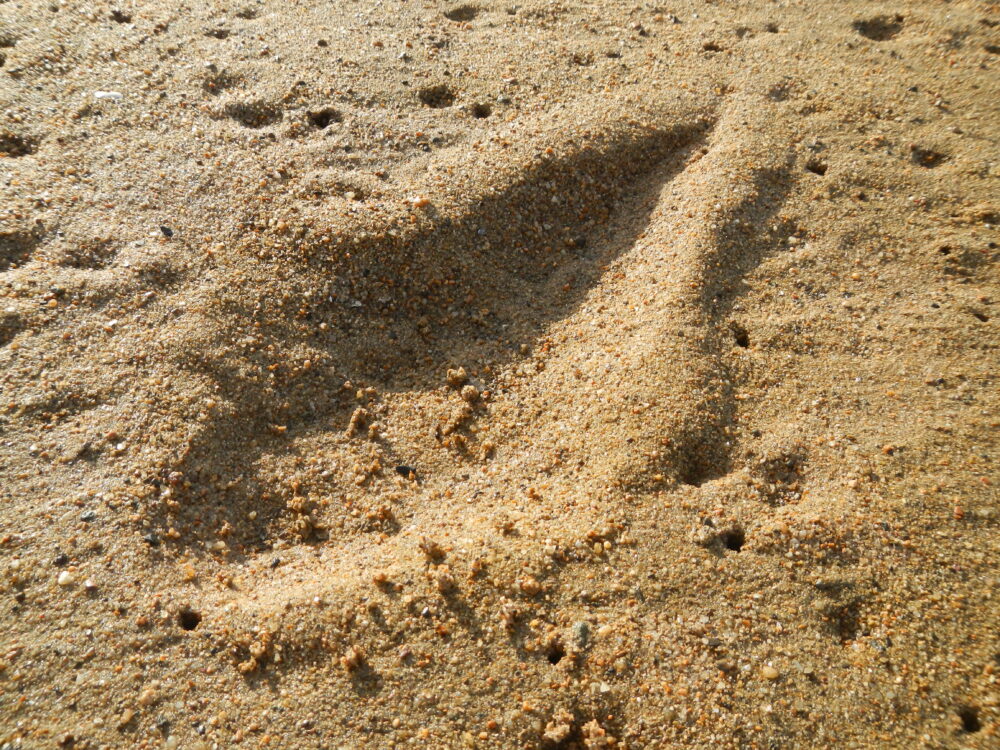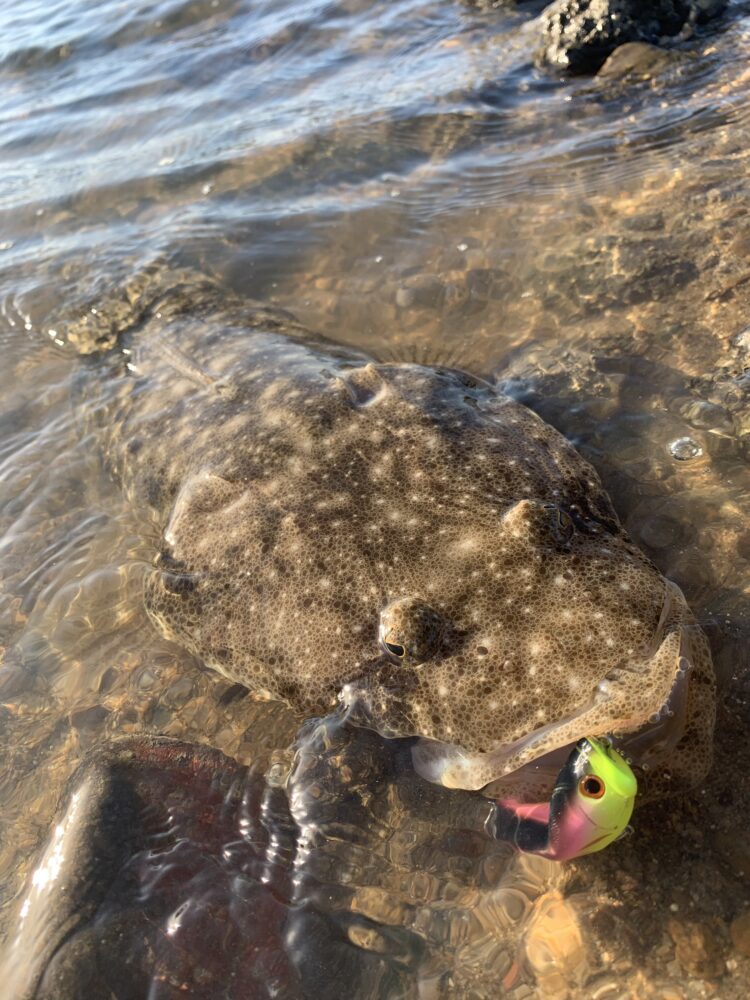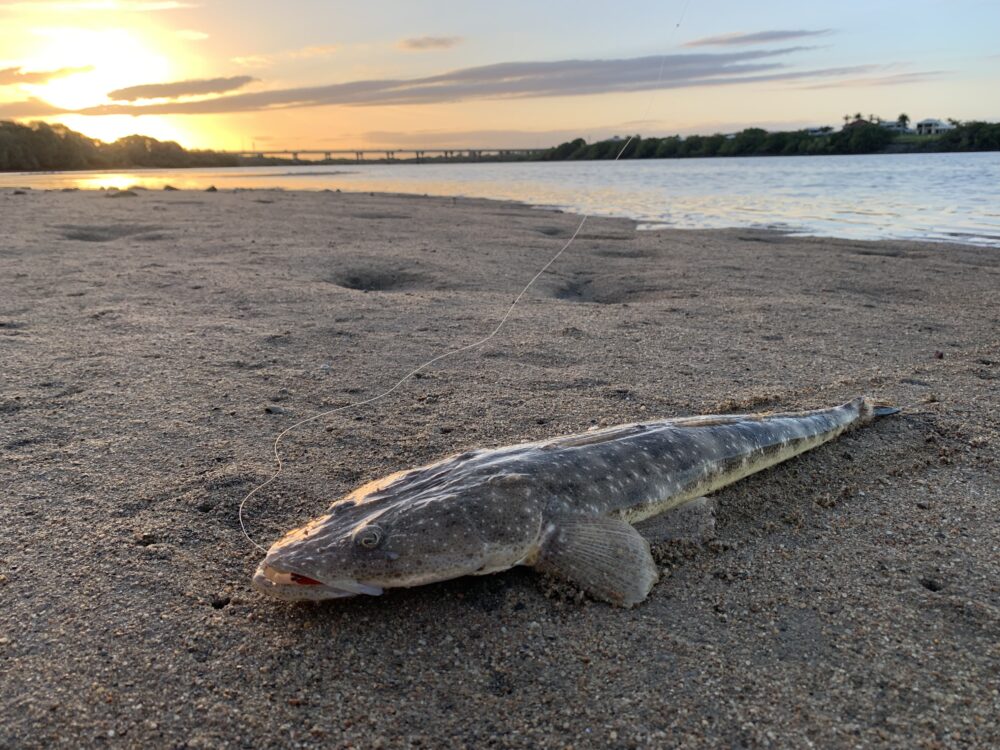Going soft on top – By Luke Galea
When it comes to using artificial lures to catch fish, then the humble flathead would surely have to be one of the most reliable target options going around. They are easily accessible to both land-based and boat fishermen, taste great and given the fact we are approaching my preferred time of year to catch these fish (winter months), well then there is no better time than now. Whilst all manners of baits will work a treat on flathead, those people who may have been sitting on the fence, always wanting to try the limitless world of lures, should look to get some early runs on the board with a flattie or two. In turn, this will build confidence and will inspire the inquisitive angler to try other styles of lures and/or more challenging species.
Any sand-flat or mud-flat will hold flathead at certain stages of the tide. The more prominent and favourable spots however will have the addition of several other features that make them stand out above the rest. Other features could include gutters, yabbie beds, shale or the presence of an oyster-encrusted rock or two. If you can combine a bunch of the above-mentioned facets, then you are onto a winning location. Other popular bread and butter fish such as whiting will also frequent these areas.
Being such an accessible variety of fish, those people who are not fortunate enough to have a boat are not disadvantaged in any way from catching a feed of quality flathead. In fact, I would put it out there that personally, I actually prefer to fish for them land-based. What I will say though is this. If it is an incoming tide, then the fish will be pushing up into the shallows with the first of the run in tide to feed over the newly inundated yabbie beds. This is where land-based fishing should be the preference. The outgoing tide is where it is advantageous to be fishing from a boat as the fish will be retreating from the flats and moving out into deeper water.
While most people wouldn’t view flathead as being the holy grail of sports-fish, they are pretty decent fun on light gear.
I opt to use a 4-10lb Samurai Reaction matched with a 2500 size spin reel, loaded with 6lb braid and 14lb leader. Can I just say this. 6lb braid is bloody strong stuff. If you tried to break it, you’d be more likely to cut your hand to the bone than pop it – so it is plenty capable, don’t worry about that. A more important consideration is your leader. Some people may use as light a leader as 10lb or as heavy as 20lb. Flatties have sharp but abrasive teeth, so they do have the ability to rasp through too light a leader material. Then again, if you have the reels drag appropriately set, then there shouldn’t be too much strain put on any potential weak part of the line. Keep in mind flathead aren’t likely to play dirty and snag you up in structure, so you can afford to take it easy with them when angling.

When you see flattie lays like this in the sand, you know you are in the right place and the fish aren’t too far away.
So earlier in the article, I briefly alluded to inquisitive anglers trying different styles of lures in order to challenge themselves once they become proficient in their use. Whilst I have commonly caught flathead on all manners of soft plastics, vibes and hard bodied lures, I have recently been having a ball catching them on little surface poppers. Being a fish that sits on its belly on the bottom of the river all day, traditional thinking might dismiss thoughts of them rising up from the bottom to eat something off the waters’ surface. Now, I’m not quite sure how far they would be willing to rise but I am catching them in less than 3 or 4 feet of water and they are rising up from that depth without an issue.
By way of poppers, I have been utilising a relatively recent release (January 2021) from the Atomic stable – the Atomic Semi-Hardz Soft Pop (50mm). I have had great success using the Semi-Hardz vibes and Minnows over the years and now the popper has been added to this stable (also comes in 75mm). The new construction is soft, hollow rubber with a hard face. The lure will spit water forward like a normal popper, but the soft, hollow body means the fish will come back to strike it time and time again if they do not hook up on the first attempt. It obviously feels far more life-like. They come in about 20 different colours from memory so their range is huge. They weigh 4.6grams which means they cast like a bullet, but perhaps, even more impressive is their versatility which is two-fold.
First being the fact that faster but more subtle twitches will get the lure meandering side to side in a walk the dog motion, which is an attribute of only the better-quality poppers on the market. Longer, more stern twitches will enact the characteristic popping motion they are more renowned for. Secondly, being hollow, these lures sometimes get small quantities of water inside them as it ingresses from the tow point and terminal positions. Continuing to use this lure as a surface lure means the angler needs to give the lure a squeeze every 5 or 6 casts to expel the water. This really only takes a few seconds each time so it’s not a real biggie. The advantage of a small quantity of water inside the lure though is that it casts further and then has the ability to be worked sub-surface which is great for all those times when the fish are a little finicky and won’t eat off the top.
Whilst flathead aren’t really on the agenda of trophy-hunters, they do make up an important bread and butter species for fishing families looking for a feed, and these fishing families make up the lion-share of fishers on the water and most likely….readership of this very magazine, so get out there in your local waterway and try for a few flatties off the surface.








